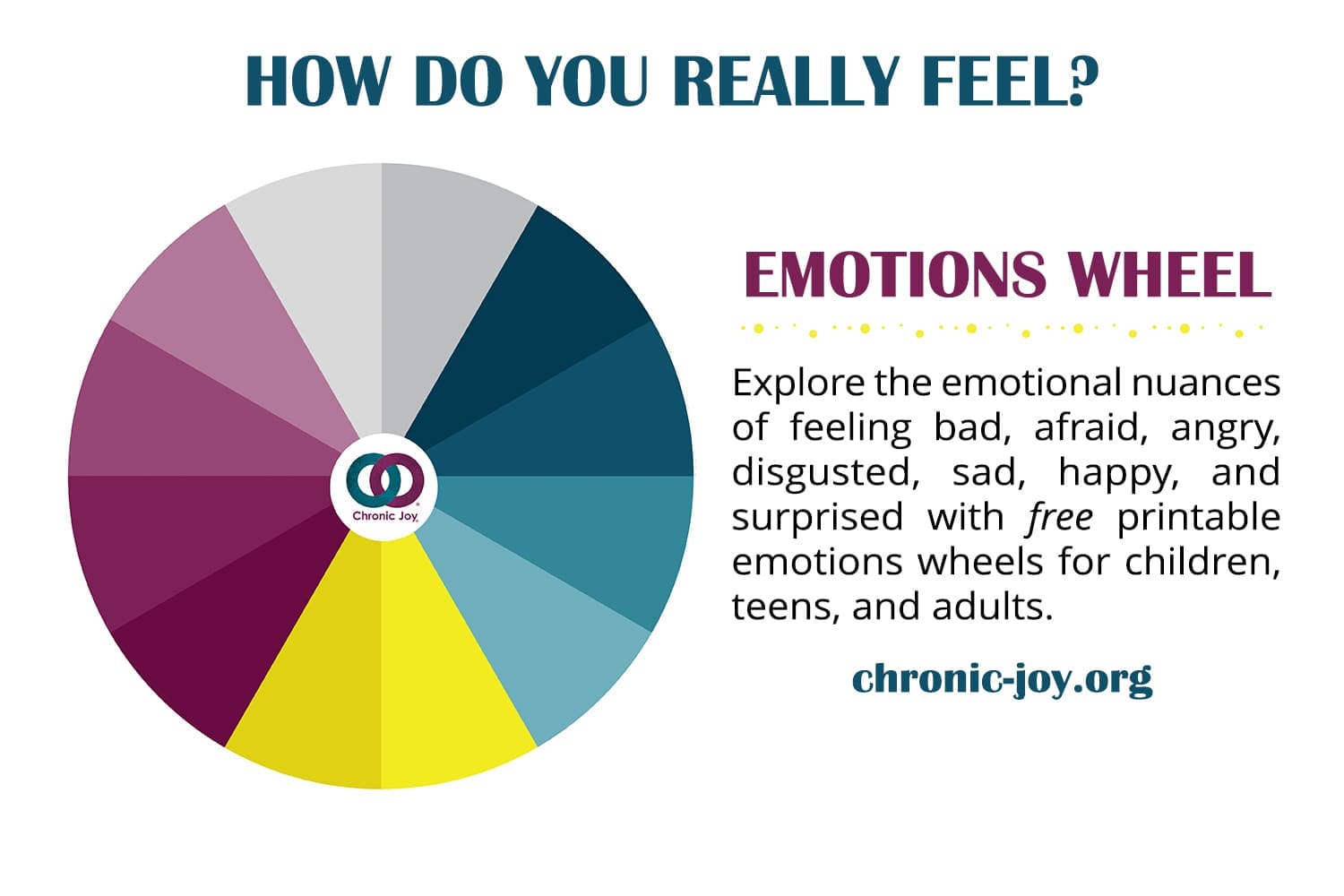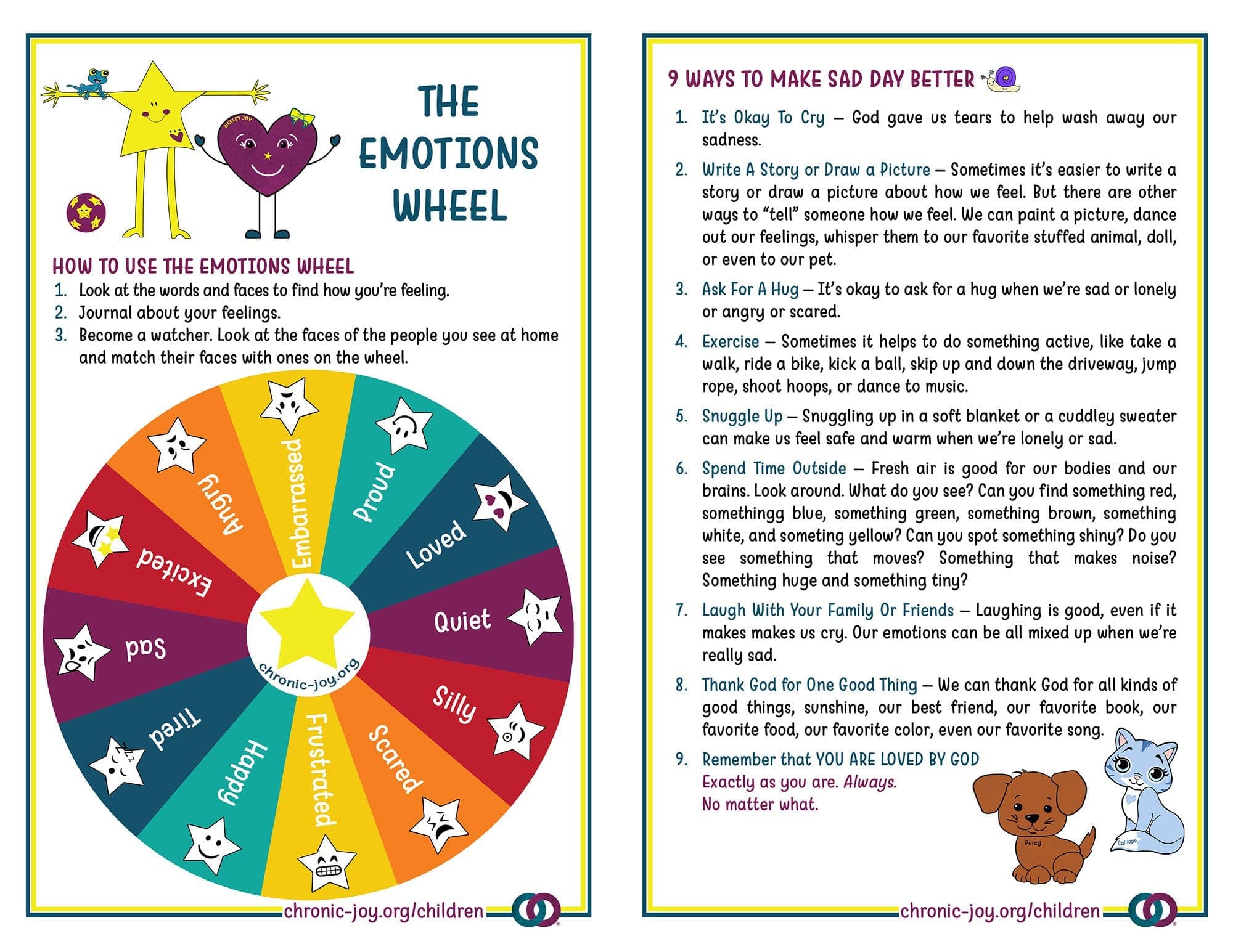
EMOTIONS WHEEL
How Do You Really Feel?
Explore the emotional nuances of feeling bad, afraid, angry, disgusted, sad, happy, and surprised with free printable emotions wheels for children, teens, and adults.
There is a time for everything, and a season for every activity under the heavens: a time to weep and a time to laugh, a time to mourn and a time to dance. (Ecclesiastes 3:1, 4)
A Tool to Identify Emotions
The Emotions Wheel is a tool designed to help us better identify and communicate our emotions instead of moving through our days without recognizing or thinking about what we’re feeling or why. When we give ourselves permission to ask the question, “How do I really feel?” we may notice the emotional nuances of feeling bad, afraid, angry, disgusted, sad, happy, and surprised.
“In the years since getting sick and becoming disabled, I’ve learned that a whole range of emotions is just as much a part of my illness as my physical symptoms,” writes Angie Ebba.
Those of us affected by the complex challenges of living with chronic illness, mental illness, chronic pain, and disability may find it difficult to identify what it is we’re actually feeling. “Sometimes just knowing the right emotion can bring a surprising amount of relief,” writes clinical psychologist Kevin Gilliland. Identifying our emotions can help us communicate more effectively, verbalize what we need, and interpret others’ feelings better.
All of us find it difficult to pinpoint exactly what we are feeling because we can experience a staggering 34,000 distinct emotions. With so many emotions, how do we navigate the turbulent waters of feelings without getting lost? An emotions wheel can help us identify the primary emotions, which is especially helpful for moments of intense feeling when our mind becomes overwhelmed and our “fight or flight” response seems to take over.
How to Use the Adult Emotions Wheel
Begin at the center of the wheel and choose one of the six core emotions (angry, bad, disgusted, fearful, happy, sad, or surprised). Follow that color out to the second tier and choose one of the more specific emotions there. Continue on to the third tier and identify which of the 82 more nuanced emotions you are feeling.
We’ve developed emotion wheels for adults, teens, and even a special wheel for children featuring both words and faces.

Emotions Wheel
God created us with a complex range of emotions which can be difficult to identify and explain. The Emotions Wheel is a tool designed to grow our emotional intelligence, thus strengthening our relationship with God as well as our compassion and empathy for others.

Emotions Wheel
God created us with a whole range of emotions, some of which can be difficult to feel and even riskier to talk about. Learning to identify our emotions helps us grow in our understanding of God and of others. The Emotions Wheel is a great place to begin!

Emotions Wheel for Kids
The Emotions Wheel is designed to help children recognize and name the emotions they experience. As their emotional vocabulary grows, so does their ability to effectively communicate what and how they feel.

